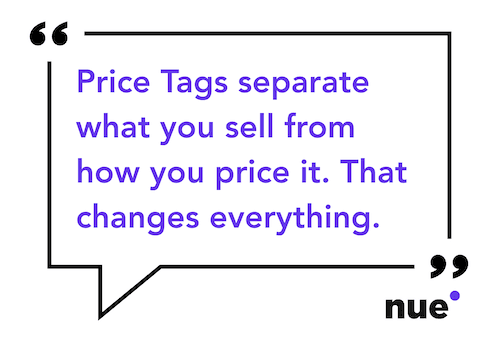A New Paradigm in SaaS Pricing: Separating Product from Price
Related tags
A New Paradigm in SaaS Pricing: Separating Product from Price
Erin Rand, Content Marketing Manager
For most SaaS companies, pricing is a strategic lever. But operationally, it still feels like a bottleneck.
Teams are launching new products, testing packaging ideas, and adapting to buyer preferences faster than ever. But their pricing infrastructure hasn’t kept pace.
Many teams are stuck with clunky CPQ systems and bloated product catalogs filled with duplicate SKUs. Every time they want to launch a new offer, run a short-term promo, or update a customer’s subscription, it becomes a game of telephone between sales, RevOps, and finance.
Instead of helping go-to-market teams move faster, pricing ends up getting in the way. Changes take too long, mistakes creep in, and promising opportunities slip through the cracks.
But there’s a better way forward. With the right tool, teams can stop working around pricing and start using it to their advantage.
In traditional CPQ and billing systems, pricing logic is deeply embedded in the product architecture. To make even a simple change, teams often have to:
- Create new SKUs
- Write or adjust CPQ rules
- Coordinate billing logic
- Manually unwind changes when a promo ends
This approach adds complexity, creates risk, and slows down GTM execution, especially for companies trying to test or iterate quickly.
Nue takes a different approach. Pricing isn’t something hardcoded into your product. It’s a separate, dynamic layer.
At the core of that model is the Price Tag.
Price Tags let you set up pricing rules separately from your product catalog — things like volume discounts, ramp terms, and usage tiers. Instead of locking those details into SKUs, the pricing gets applied when you create the quote.
This separation means you can update and experiment with pricing quickly, without overhauling your entire product setup or slowing down your sales process.

Pricing needs to move at the speed of your go-to-market strategy, not the speed of a system upgrade. And it needs to serve multiple masters.
Buyers want transparency and clarity. Sales wants flexibility. RevOps wants control. Finance wants clean reporting.
Price Tags help you tighten operations where it counts. They reduce revenue leakage by eliminating manual pricing errors, cut time-to-market for new offers, and give your team the flexibility to adapt pricing without losing control or visibility.
Price Tags aren’t just a way to streamline pricing operations. They represent a fundamental shift in how SaaS companies manage pricing — moving away from rigid, hardcoded systems toward flexible, adaptable frameworks.
They unlock experimentation. They reduce complexity. And they give teams the tools to treat pricing like the growth lever it’s meant to be.
Whether you’re rolling out usage-based models, launching region-specific offers, or refining enterprise bundles, Price Tags give you the architecture to do it with speed, clarity, and confidence.
Want to dig deeper? Our guide, Nue Price Tags: The Smarter Way to Manage SaaS Pricing, walks you through five common SaaS pricing scenarios that break legacy CPQ and billing tools — and shows how Nue Price Tags handle them without added complexity.